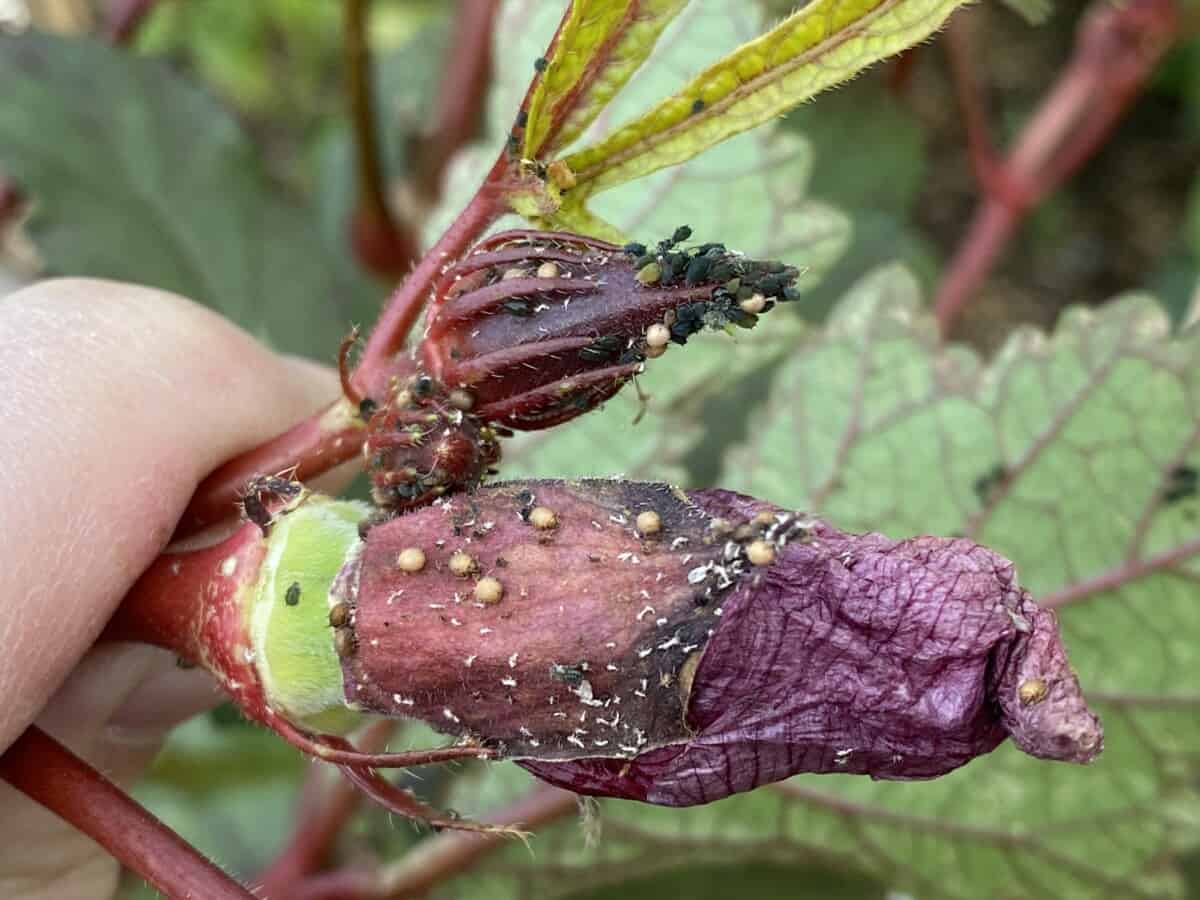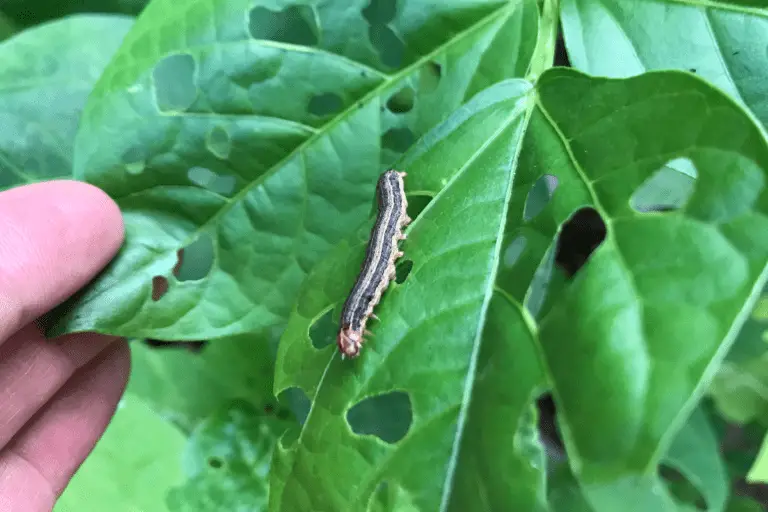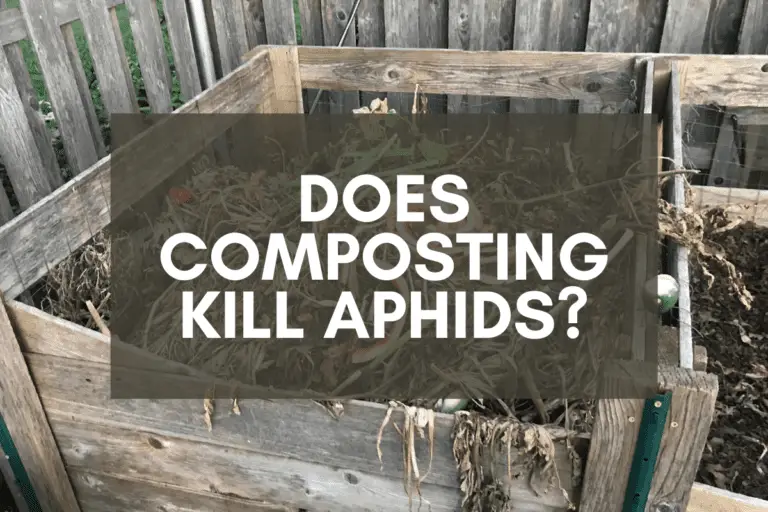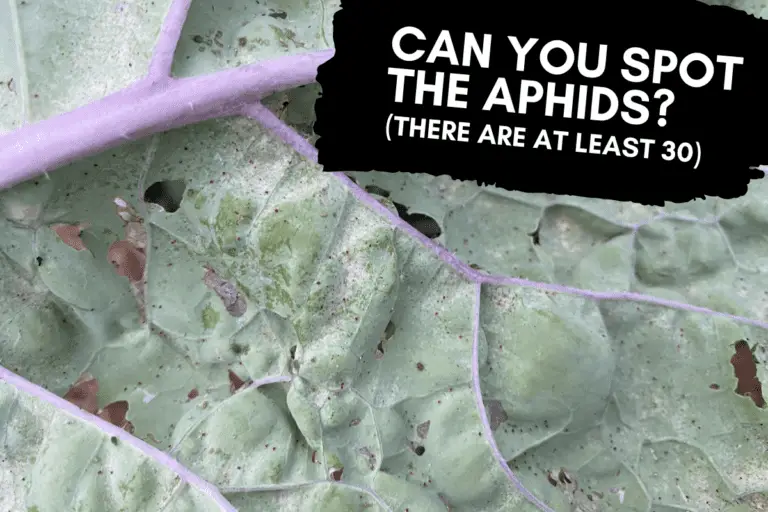Are Aphids Invasive?
Have you ever seen aphids in your garden and wondered where they came from and how they got there? Have you seen reports of various invasive species–from hammerhead worms to Asian gypsy moths to spotted lanternflies (and countless others)–and wondered if aphids were invasive as well?
Aphids are highly invasive insects. Although they prefer more temperate climates, aphids can be found on every continent but Antarctica. Female aphids give birth asexually and can produce winged aphids when necessary, which makes it easy for aphids to travel to and invade new regions.
Much like spider mites and other tiny pests, aphids typically travel unnoticed from place to place and plant to plant, making it practically impossible to determine where they originated.
And because there are so many different kinds of aphids–last time I checked, there were more than 4,700 different species in the Aphididae family–you’ll never know what kind of aphids have invaded your property unless you’re a specially-trained aphid entomologist.
(And like me, you’re probably not!)
Long story short, you’ll never know if you’ve got an invasive species of aphid on your hands, but it helps to understand a bit about aphids–both how aphid infestations occur and what kinds of damage they’ll do to your plants.
Are Aphids an Invasive Species?
We tend to call bugs “invasive” if they’ve arrived in and adapted to new areas, creating havoc among a region’s established ecosystems.
There are countless instances where pests have traveled unnoticed to new regions but failed to gain a foothold there. These aren’t typically thought of as invasive because much of the time we don’t even know they’re there. They simply can’t survive and thus disappear in the face of new environmental conditions.
There are also countless instances when humans have purposefully introduced new species into their local environments. Some species proved to be highly beneficial (such as tomatoes and potatoes). Others were thought to be beneficial but ended up becoming major problems (here’s looking at you, asian carp and kudzu!).
With the rise of expanded global commerce, countless aphid species can travel the world at rates that have never before been seen. These unwitting travelers evade detection by hitchhiking on plant foliage, feeding and reproducing until the infested plant has reached its new destination.
Theoretically, aphid transplants can increase the biodiversity of any given region. However, given their ability to spread disease and damage thousands of plant species, there’s a greater chance that invasive aphids will cause more harm than good if they’re able to establish themselves in a new place.
Let’s take a look at a few examples.
One of the earliest recorded instances of invasive aphids involved the wooly apple aphid. As researchers have noted, this species was endemic to North America but managed to make its way to England in the 1780s, then migrated further into Europe before causing widespread damage in Germany (1802), France (1812), Italy (1841), and Switzerland (1870).
These same researchers have documented 100+ instances of invasive aphids in England alone over the past several years. Others have found literally dozens of invasive aphids across different European countries, which suggests high rates of migration.
This pattern is playing out elsewhere as well. In Denmark, research teams have noted the arrival of a new aphid, the spirea aphid (Aphis spiraecola), which threatens citrus trees and could impact the country’s apple growers. This species seems to have traveled westward across Europe since earlier research suggested that it had migrated from Slovakia and the Czech Republic all the way to Denmark and England. It’s unclear what the long-term effects will be, but the new species seems to be displacing apple aphids.
And just as America gave Europe the wooly apple aphid and the black-bordered oak aphid, Europe has given America the wooly beech aphid and the European asparagus aphid. Meanwhile, North Africa has gifted Spain the yellow sugarcane aphid, and China gave North America the wooly hackberry aphid, as did Russia with the Russian wheat aphid.
There are literally thousands of stories like these.
In my favorite story to date of invasive species run amok, a team of North American researchers has found that the invasive European buckthorn (Rhamnus cathartica) has provided shelter for the invasive soybean aphid (Aphis glycines) as well as fertile ground for an invasive disease know as oat crown rust.
But here’s where it gets interesting: The buckthorn seeds were likely spread by the invasive European starling (Sturnus vulgaris), and the buckthorn plants provide a hospitable environment for an invasive earthworm (Lumbricus terrestris), which then attracted an invasive flatworm predator (Bipalium adventitium). Meanwhile, the invasive soybean aphid began attracting an invasive ladybugs (Harmonia axyridis), invasive ground beetles (Agonum muelleri), and invasive parasitoid wasps (Aphelinus certus).
In other words, what we have here is not the tale of an invasive species that conquers all–as Asian carp and kudzu seem to be doing–but a much more complicated narrative, one involving numerous invasive species caught up in new kinds of ecosystems.
As I’ve noted above, aphids are adept at these kinds of invasions, especially when human activity and global commerce provide the perfect conditions for global aphid dispersal.
And unlike the wooly apple aphid, which needed decades in the 19th century to move from one country to the next, aphids in our 21st century world can move much faster, hitchhiking unnoticed in our cargo ships, planes, cars, and trains from one corner of the world to another.
How Destructive Are Aphids?
Whether or not you’re interested in the details surrounding aphid migrations and invasions, it’s helpful to know what kind of damage aphids can do once they’ve arrived on your property.
Here’s a list of 7 ways that aphids can damage your plants:
1. They Spread Disease
Aphids are notorious vectors of plant disease. When aphids puncture plants’ epidermal tissue, using their piercing mouthparts (known as stylets) to seek out micronutrients, they excrete saliva while doing so, and the saliva transfers to the plant any diseases the aphids might be carrying at that moment. Some aphids carry more diseases than others, but many species are responsible for doing so.
2. They Deprive Plants of Micronutrients
As I noted above, aphids use their stylets to puncture plant tissue. In doing so, they seek out so-called phloem cells, which are responsible for transporting nutrients throughout the plant. As they tap into the phloem cells, they disrupt the plant’s biological processes, causing damage to the plant’s foliage.

3. They Cause Yellowing and Decay
This damage typically results in a yellowing and subsequent decay of the plant’s leafy material. Because aphids are literally sucking away the plant’s nutrients, the foliage can’t retain its color and begins to turn yellow, then brown. If aphids continue feeding, this process will eventually cause leaves to turn brittle and die.
4. They Secrete Honeydew
As aphids feed on plants, they secrete a sugary substance known as honeydew. This not only attracts unwanted ants. It also provides a key ingredient for the growth of sooty mold. More on this below.

5. They Encourage Ant Buildup
Ants are a normal part of your yard’s biodiversity, but when aphids begin secreting honeydew, ants will swarm to your plants, drawn by the sugary substance. In itself, this isn’t such a bad thing, but ants will kill off beneficial insects who might otherwise help take care of your aphid problem (e.g. ladybugs, lacewing larvae, and parasitoid wasp larvae). For this reason, I don’t like to see ants clustering around aphid-infested plants.
6. They Cause Sooty Mold
Because honeydew is a sugary substance, it provides The necessary conditions for the growth of mold, particularly sooty mold. When it grows on leaves, sooty mold gives them a black, ashy appearance. The problem with mold is that it blocks out sunlight, eventually damaging the plant’s foliage. Thankfully, it can be cleaned off with soapy water sprays.
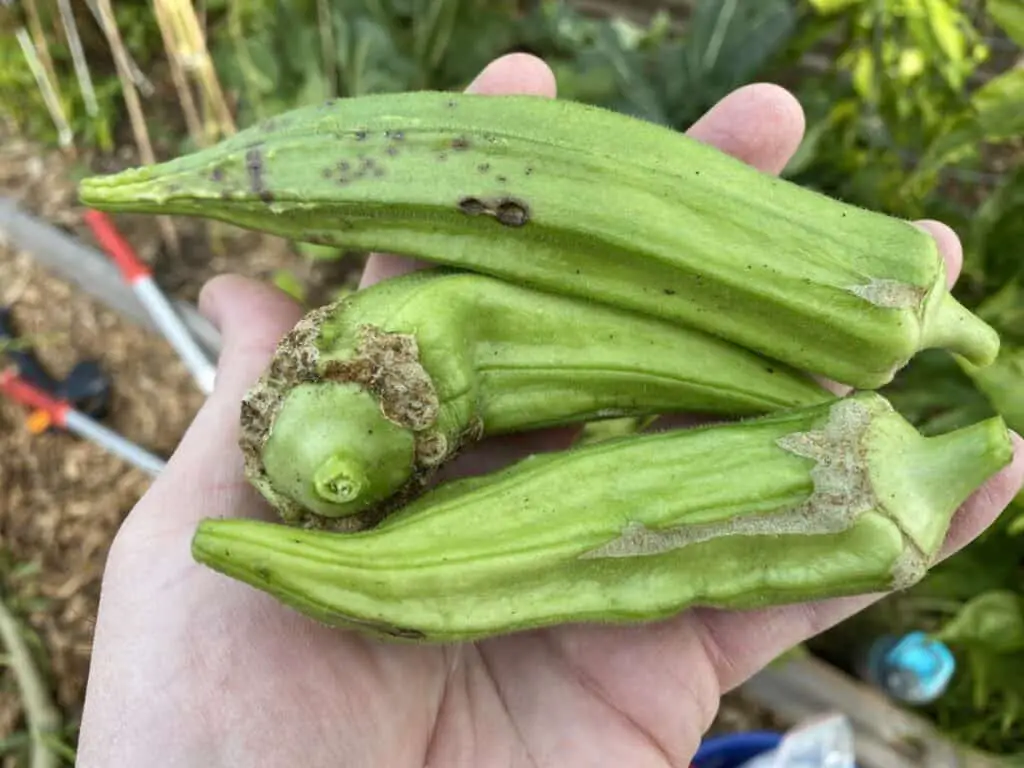
7. They Interfere with New Plant Growth
Aphids tend to cluster around flowers and plant buds, so as an infestation grows, there’s a higher likelihood that aphids will damage emergent growth as they feed on phloem cells around each new bud.
Is It Bad to Kill Aphids?
Aphids play an important role in the ecosystem. Although they damage many trees, flowers, shrubs, and garden plants, they can’t harm humans, they don’t hurt pets, they’re not poisonous, and they also serve as a major food source for ladybugs, lacewing, parasitoid wasps, and other insect predators.
So is it bad to kill them?
As long as natural products are used, aphid infestations can be treated without causing additional harm to pollinators and other beneficial insects. When sprayed in the early evening, neem oil and insecticidal soap sprays will stop most aphid infestations.
Simply put, if you see aphids, there’s no way to know exactly where they came from or whether they’re an invasive species or one that’s endemic to your area.
But what you should know is that all aphids have similar feeding patterns. If you wait too long to take care of your aphid problem—or if you assume that cold weather or the winter months will take care of the problem for you—you might end up throwing away or composting your aphid-infested plants.
But if you treat the problem once you see it, you’ll have no issues getting rid of aphids since they’re fairly easy to treat. I’ve provided some general tips for doing so in my articles on getting rid of black aphids and green aphids.
Further Reading
Want to learn more about aphids’ migration and reproduction patterns? If so, check out these articles:
